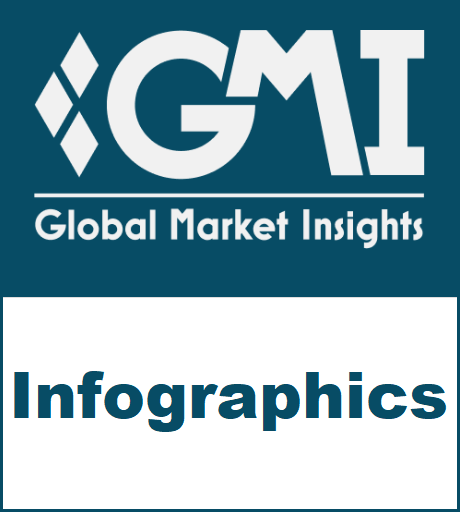Home > Pressrelease > Automotive Filter Market Size to surpass $22bn by 2025
Automotive Filter Market Size to surpass $22bn by 2025
- Published Date: October 18, 2019
Automotive Filter Market size is slated to surpass USD 22 billion by 2025; according to a new research report by Global Market Insights Inc.
The automotive filter market growth from 2019 to 2025 is owing to a high replacement rate due to need for maintenance of power and performance of the vehicle. Strong dust holding capacity, filtering efficiency and provides maximum protection to vehicle from harmful contaminants are key driving factors. These filters maximize vehicle performance and increase flow of clean air into the engine, resulting in high power, and reduction in fuel consumption of vehicle. Routine vehicle inspections by governments in order to check vehicle fitness and ensures vehicle adherence to regulations has further increased the filter installation in vehicles.
Stringent regulatory laws laid by government towards emission to promote automotive filter market value
Stringent emissions regulations implemented by governments including U.S. and EU commission is anticipated to boost automotive filter market growth. For instance, the U.S. federal government has amended stringent regulatory standards for GHG emissions from passenger cars & trucks, commercial trucks & buses and regulations for smog, soot, & other air pollutants from non-electric motorcycles aimed to decrease environmental impacts due to vehicle emissions.
This has urged the manufacturers to develop sustainable aftermarket products that adhere to the norms set by the government. For instance, in September 2017, Parker Hannifin announced to launch new sustainable fuel filters made of glass fiber with increased efficiency and environmental benefits for its customers.
Browse key industry insights spread across 295 pages with 307 market data tables and 44 figures & charts from the report, “Automotive Filter Market Size By Product (Air Filter [Intake Filters, Cabin Filters], Fuel Filters, Oil Filters) By Application (Light & Heavy Commercial Vehicles, Two Wheelers, Passenger Cars), By Product (Cabin, Intake), By End-Use (Aftermarket, OEM), Regional Outlook (U.S., Canada, Mexico, Germany, UK, France, Italy, Spain, Russia, Poland, China, India, Japan, South Korea, Indonesia, Thailand, Brazil, Argentina, South Africa, Iran, Morocco), Competitive Market Share & Forecast, 2019 – 2025” in detail along with the table of contents:
https://www.gminsights.com/industry-analysis/automotive-filters-market
Cabin comfort systems to promote automotive air filters demand
The automotive air filter market will witness a steady growth rate owing to growing utilization in preventing pollen, asphalt and dust particles to enter inside the engine. Growing prevalence of respiratory diseases among the populace due to increasing vehicular emissions and the need for driver’s safety will foster the cabin and intake filter demand. Also, surging preference for washable and reusable air filters for reducing the stress levels on cabin HVAC fans and lowering of repairment cost will further stimulate the industry size.
Passenger vehicles segment to witness a growth rate of around 6.6% globally
The passenger vehicle segment is projected to grow sharply over the forecast timeline. Growing passenger cars demand owing to rising disposable incomes will promote automotive filter market demand. Europe led by Germany is one of the largest producers of passenger cars. European Union produced approximately 19.2 million motor vehicles which accounted for 20% of total motor vehicles produced globally.
Passengers entering into vehicle can suffer from numerous health risks owing to toxic emissions from exhaust of vehicle. Cabin air filters help to maintain the quality of cabin air by filtering pollutants thus maintaining clean air inside the cabin. Additionally, rising passenger car production in countries including India and China owing to supportive FDI climate along with low production cost will further augment industry development.
Rapid proliferation of OEMs to propel the market demand
Rising OEM globally owing to increasing vehicle manufacturers looking to optimize manufacturing processing, faster production and lower production cost will drive adoption of new technologies. Shifting OEM manufacturer’s preference towards economies of scale and lower production cost has urged the major vendors to establish production plants in Asia-Pacific region. Favorable business outlook supported by FDI policies and large consumer base supporting the regional market development. Rising OEM’s focus on premium products with superior design elements, infotainment features, safety and top-end performance for catering niche markets will further foster the overall industry growth.
Vehicle emission standards in the U.S. will accelerate automotive filter industry growth
North America automotive filter market size is anticipated to witness gains on account of growing vehicles on the road along with growing emissions in the region. North American aftermarket is projected to surpass USD 60 billion by 2021 owing to growing aftermarket components demand along with increasing focus on periodic maintenance will further propel the regional demand.
Moreover, stringent regulations imposed by EPA and NHTSA aiming to reduce greenhouse gas emission along with lower utilization of gasoline will fuel product demand. For instance, the Environmental Protection Agency (EPA) has enacted standards such as fuel economy standards national program for greenhouse gas emissions (GHG) for light-duty vehicles in the U.S.
The companies operating in the automotive filter market are focusing on offering production capacity expansion, adoption of online distribution channels, mergers, and acquisitions to capture significant market share. As the demand for product increases, the competitive landscape is expected to become more intense with key industry participants focusing more on aggressive pricing, raw material procurement, and technology development to stay ahead of competition. Some key players include Robert Bosch, MANN+HUMMEL, Cummins, Inc., Toyota Boshoku, Parker Hannifin Corp, Mahale GmbH, etc.
Explore More on Related Topics:
Infographics
